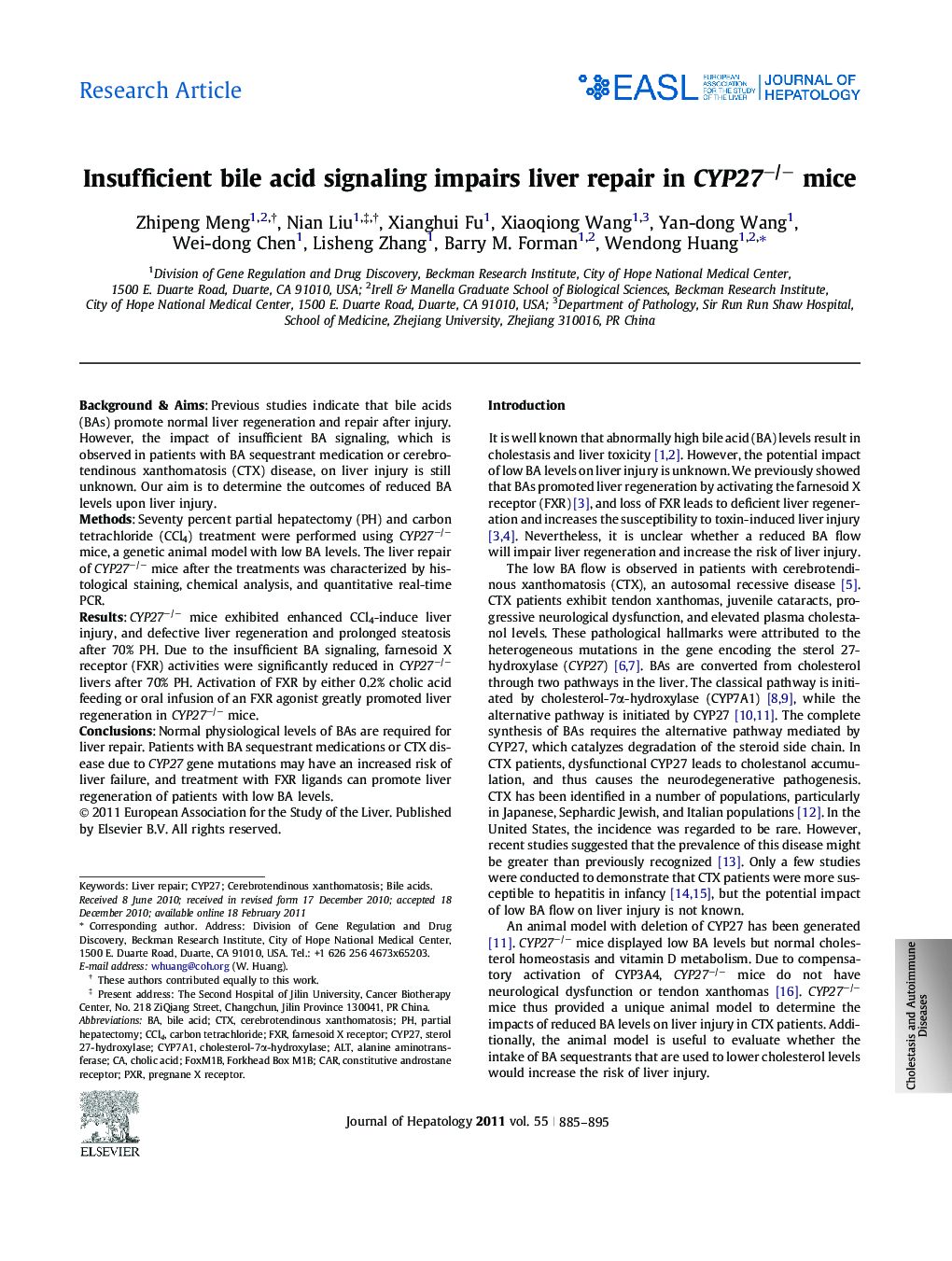| Article ID | Journal | Published Year | Pages | File Type |
|---|---|---|---|---|
| 6107889 | Journal of Hepatology | 2011 | 11 Pages |
Background & AimsPrevious studies indicate that bile acids (BAs) promote normal liver regeneration and repair after injury. However, the impact of insufficient BA signaling, which is observed in patients with BA sequestrant medication or cerebrotendinous xanthomatosis (CTX) disease, on liver injury is still unknown. Our aim is to determine the outcomes of reduced BA levels upon liver injury.MethodsSeventy percent partial hepatectomy (PH) and carbon tetrachloride (CCl4) treatment were performed using CYP27â/â mice, a genetic animal model with low BA levels. The liver repair of CYP27â/â mice after the treatments was characterized by histological staining, chemical analysis, and quantitative real-time PCR.ResultsCYP27â/â mice exhibited enhanced CCl4-induce liver injury, and defective liver regeneration and prolonged steatosis after 70% PH. Due to the insufficient BA signaling, farnesoid X receptor (FXR) activities were significantly reduced in CYP27â/â livers after 70% PH. Activation of FXR by either 0.2% cholic acid feeding or oral infusion of an FXR agonist greatly promoted liver regeneration in CYP27â/â mice.ConclusionsNormal physiological levels of BAs are required for liver repair. Patients with BA sequestrant medications or CTX disease due to CYP27 gene mutations may have an increased risk of liver failure, and treatment with FXR ligands can promote liver regeneration of patients with low BA levels.
